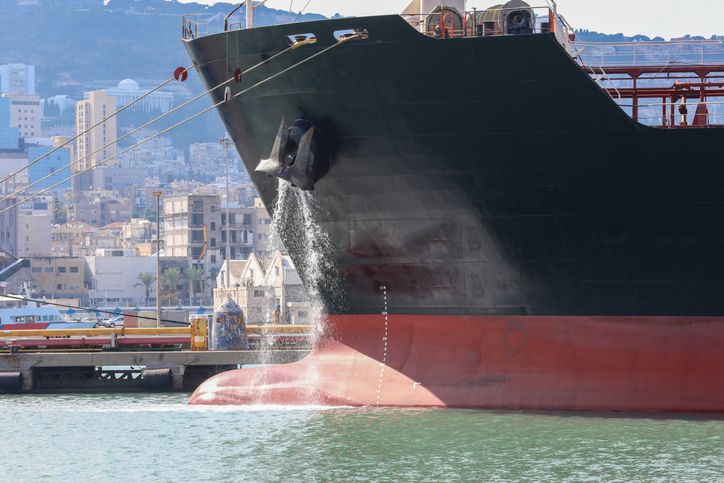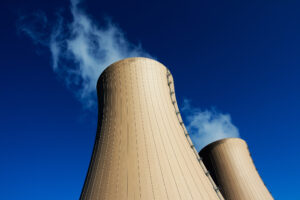Ballast water treatment systems remove and destroy both biological and non-biological substances from ballast water. This article reviews the importance of ballast water treatment systems, some common methods, industry regulations, and selecting the ideal method.
Importance of Ballast Water Treatment Systems
Since the advent of steel-hulled ships, water continues to serve as ballast to stabilize ships, especially when not fully laden. This practice reduces stress on the hull, provides transverse stability, as well as improves propulsion and maneuverability. In addition, ballasting compensates for weight changes in cargo loads and fuel levels. However, ballast water often contains a plethora of organisms from its port of origin, ranging from microscopic bacteria to larger aquatic species. When these organisms enter into new environments, they can disrupt ecosystems, outcompete native species, and even introduce diseases. Some examples include Zebra mussels in the Great Lakes, North American comb jelly in the Black Sea, and European green crab in Australia. As a result, it is necessary to deploy ballast water treatment methods to safeguard marine environments.
Common Ballast Water Treatment Systems
Ballast water treatment systems (BWTS) neutralize or remove harmful organisms from ballast water before discharging it into a new location. These systems employ various technologies in combination with filtration to achieve this goal. Some common methods include electrolysis, ultraviolet radiation, ozonation, and chemical injection, each with its advantages and disadvantages.
Electrolysis Treatment
An electrolysis treatment system produces an oxidizing disinfectant via water activation. In this procedure, an electric current is applied to water in an electrolysis chamber, breaking the water into an acidic biocide (anolyte) and an alkaline substance (catholyte). The anolyte is injected into the ballast water, creating oxidizing chemicals that kill unwanted organisms. After disinfection, the system introduces the catholyte into the water to balance the pH. Thereby minimizing the ballast tank corrosion and harm to the environment.
Aside from the analyte and catholyte, electrolysis produces hydrogen gas, which increases with increasing seawater salinity. Because this gas is explosive, it requires meticulous handling on the ship. Another downside of this method is that its effectiveness is temperature-dependent, with poor results at temperatures below 15℃. So, low temperatures necessitate water heating, which increases energy consumption onboard.
Ultraviolet Treatment
Ultraviolet (UV) light kills microorganisms by disrupting their DNA, preventing them from performing vital cellular functions. The efficiency of UV systems depends on the total suspended solids (TSS) and the opacity of the water. High levels of TSS and opacity decrease the penetration of UV light in the water, thus rendering it ineffective. So, the intensity of the light needs to be increased, which increases energy consumption and shortens the UV lamp’s life. This is why these systems often use filters to remove particles before the water passes the UV reactor. One advantage of UV treatment of ballast water is that it produces no harmful byproducts. Hence, eliminating the need for post-treatment processes before releasing the water into the environment. However, it is energy-intensive when treating water with high sediment content.
Chemical Injection Treatment
Similar to UV systems, chemical injection treatment usually serves alongside filtration. This treatment process involves introducing biocides such as chlorine to inactivate microorganisms in the ballast water. Unlike electrolysis, this treatment method is not affected by the salinity of the water. But the ballast water may require neutralization before discharge due to harmful byproducts. The chemicals that serve in this process are usually trademarked, with supplies limited to certain ports. Also, the chemicals require significant storage space onboard and are highly toxic. Thus there is a need for the implementation of strict safety provisions and crew training. This often results in higher operational costs than other ballast water treatment systems. Another downside is that chemical treatment is affected by temperature, with the system requiring longer treatment times at low temperatures.
Ozonation
This system generates ozone from ambient air and injects it into the ballast water to oxidize and neutralize aquatic species. Ozone reacts with other chemicals that occur naturally in seawater to form hypobromous acid and hypobromite ions. These are effective disinfectants. Waters with high concentrations of organic matter require larger ozone doses for sufficient disinfection. Salinity and temperature do not affect this method, as it does for other treatment methods, but the treatment times may be longer. Ozone and hypobromous acid disintegrate rapidly, especially in seawater, so neutralization of byproducts is required before releasing ballast water. Another disadvantage of this treatment is that ozone causes the breakdown of ballast tank coatings, which accelerates corrosion. Also, ozone is toxic, which necessitates additional safety measures and training.
Further Treatment Options
Several other ballast water treatment methods exist in the marine industry. For example, ultrasonic sound can be transmitted through the ballast water to kill cells of organisms within. The result is a high pressure shock wave called cavitation which is used in combination with filtration or any of the methods in previous sections.
Another technique that serves with other methods is deoxygenation. This method entails introducing inert gas like nitrogen into ballast water to strip it of oxygen, thereby destroying oxygen-dependent life forms. Generally, it takes several days for a complete deoxygenation to occur, resulting in long treatment times. Also, the deoxygenation system takes up space onboard. Deoxygenation usually serves alongside pasteurization, which entails heating ballast water to temperatures that will kill the organisms. A separate heating system can be produced from this process, or the ballast water can cool the ship’s engine. Either way, heating of the ballast water is achieved, with the latter option saving space onboard.
Regulations Governing Ballast Water Treatment
Under the administration of the International Maritime Organization (IMO), the global community has adopted the “International Convention for the Control and Management of Ship’s Ballast Water and Sediments, 2004”. This Convention requires all ships in international traffic to manage their ballast water and sediments to a certain standard. However, this standard should follow a ship-specific ballast water management (BWM) plan. In addition, all ships must carry a ballast water record book and an international ballast water management certificate. Parties to the Convention can take additional measures, but these have to be subject to criteria in the Convention and to IMO guidelines.
IMO Guidelines for Ballast Water Management
The IMO guidelines constrain ships to conduct ballast water exchange at least 200 nautical miles from the nearest land and in water with 200 meters minimum depth. If this is impossible, such as in a short voyage, the exchange should be at least 50 nautical miles from the nearest land. But this should be in waters of at least 200 meters depth. When meeting these requirements is not feasible, the Port State may provide designated areas for the exchange. This exchange should be at an efficiency of 95% volumetric exchange of ballast water. Also, ships conducting ballast water management shall discharge
-
- Less than 10 viable organisms per cubic meter that are greater than a minimum dimension of 50 micrometers.
-
- Less than 10 viable organisms per milliliter (ml) that are of dimensions between 10 and 50 micrometers.
-
- Indicator microbes at the following concentrations:
-
- Toxicogenic Vibrio cholerae less than 1 colony-forming unit (cfu) per 100 ml. or less than 1 cfu per 1 gram zooplankton samples.
-
- Escherichia coli less than 250 cfu per 100 ml.
-
- Intestinal Enterococci less than 100 cfu per 100 ml.
-
- Indicator microbes at the following concentrations:
The IMO also limits the number of remaining disinfectants in ballast water when chemical treatments are used. This limit varies according to the type of disinfectant. For example, the amount of free chlorine or chlorine compounds present in ballast water after treatment should be less than 0.1 mg/l.
US Coast Guard Guidelines on Ballast Water Management
Apart from the IMO, various Port States have their regulations, which share similarities with the 2004 Convention. One of these is the US Coast Guard regulations, which require the same discharge standards as the IMO, with some additional requirements. Some of these include:
-
- Cleaning ballast tanks regularly to remove sediments.
-
- Rinsing anchors and chains when the anchor is retrieved.
-
- Removing fouling from the hull, piping, and tanks regularly.
-
- Maintaining a BWM plan.
-
- Maintain records of ballast and fouling management.
-
- Submit a report form 24 hours before calling at a US port.
Moreover, the EPA and VGP (Vessel General Permit) have additional requirements for periodical sampling, including:
-
- Calibration of sensors.
-
- Sampling of biological indicators.
-
- Sampling of residual biocides.
-
- Periodical sampling records must be retained on board for at least 3 years.
The Right Ballast Water Treatment Solution
As the previous sections highlight, selecting the right ballast water treatment system can be tedious. It depends on a variety of factors, including:
-
- The total amount of ballast water on the ship.
-
- Ballast water flow rate.
-
- If it is a new ship or a retrofit on an existing vessel.
-
- Company policy about waste disposal.
-
- Port State and IMO guidelines.
At AlpHa, we pride ourselves on developing innovative measurement solutions for shipowners and operators to gain unparalleled insights into key treatment parameters. Thus real-time monitoring, proactive maintenance, and optimization of your BWTS is enabled. With our sensors providing accurate water quality measurements and our mechanical assemblies ensuring precise dosage control, you can be sure of efficacy while minimizing environmental impact.




